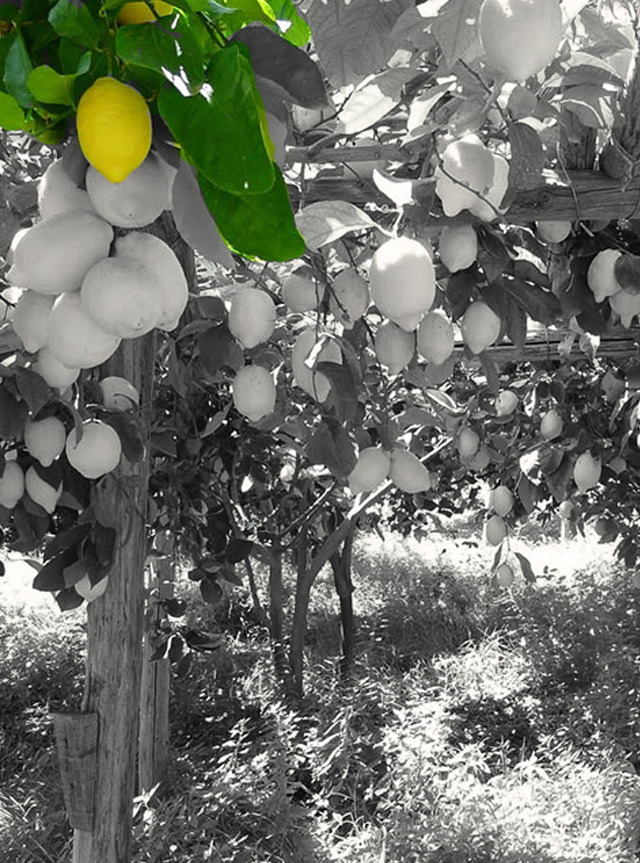
Scientific studies show the particularity of the Amalfi Coast's Lemon. The first scientific description of Sfusato Amalfitano Lemon dates back to 1646 and it is the work of Giovan Battista Ferrari in its accurate description that anticipated for more than three centuries the final consecration of the specificity of Amalfi Coast's Lemon: the product obtained in April 2001 the IGP, Protected Geographical Indication, by the European Union.
Official recognition ennobles judgment profane and confirms the results of the important scientific studies that identify the specific properties of the Amalfi Coast's Lemon, unique not only for its elongated and pointed, very characteristic, but also for the fragrance and the organoleptic qualities.
The research carried out explicitly attests that the lemon of the Amalfi Coast has a particular genetic basis that makes the fruit qualitatively interesting, not only for the direct consumption, but also for processing and in particular for the preparation of the famous liqueur: The Limoncello IGP (Lemon liqueur of the Amalfi Coast). We can then say that the extract from Amalfi lemons has a much greater aroma and also the bouquet of the essential oil extracted from the lemon of the Amalfi Coast is particular for the harmony of its olfactory notes.
The bulk of the aroma of a lemon peel is given by the oxygenated compounds that are contained in flavedo, the yellow part of the peel. The Department of Chemical and Food Engineering of the University of Salerno has certified that the peel of the lemon IGP Amalfi Coast contains amount of oxygenates in measuring almost double than any other lemon.
The Institute of Arboreal Cultivation of the University of Naples has confirmed that the lemon IGP Amalfi Coast, as well as presenting the highest ascorbic acid content and a large number of oil glands in flavedo, has a yield of juice - relative to the size of the lemon - average high.